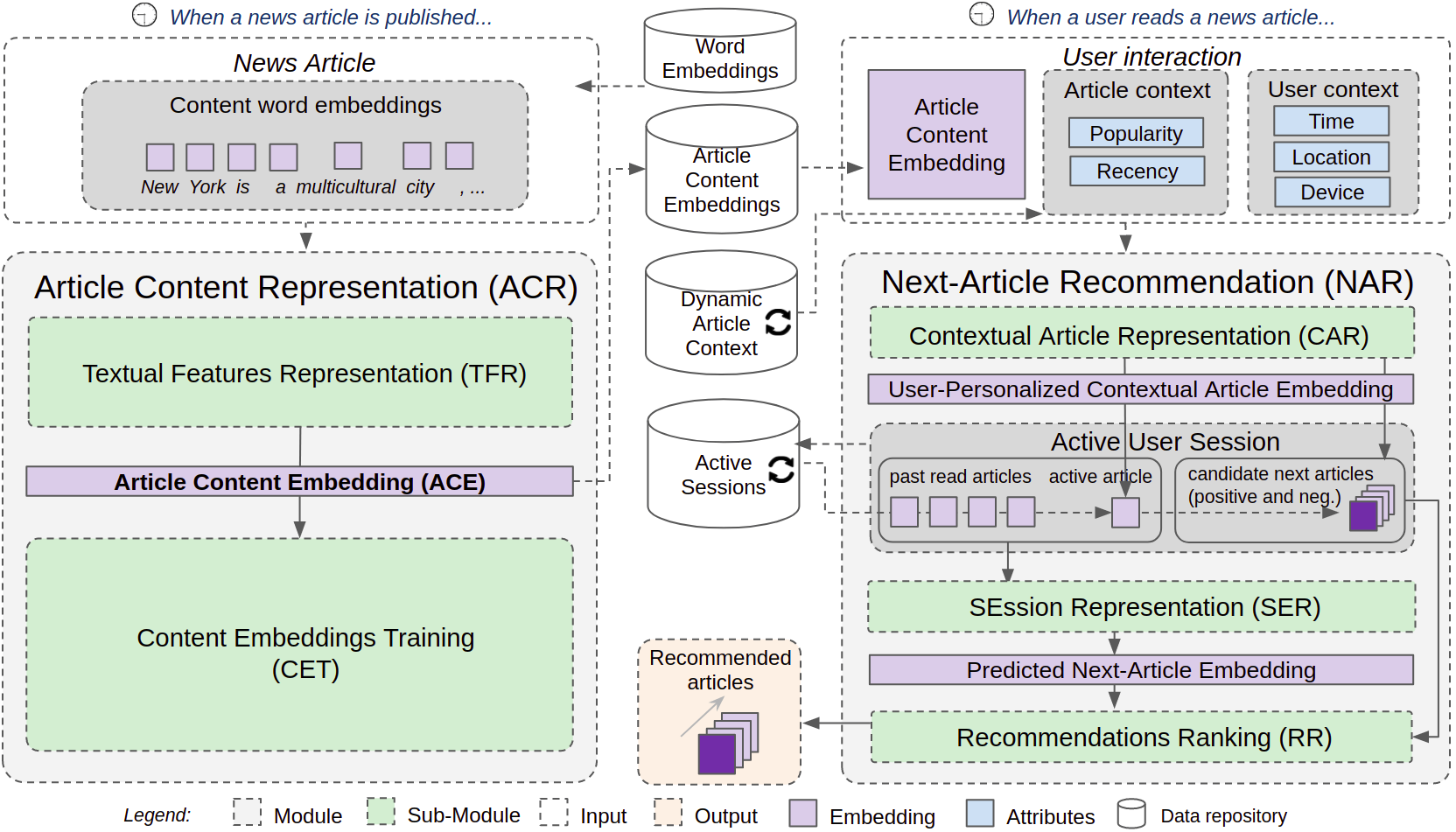CHAMELEON: A Deep Learning Meta-Architecture for News Recommender Systems [Phd. Thesis]
Recommender Systems (RS) have became a popular research topic and, since 2016, Deep Learning methods and techniques have been increasingly explored in this area. News RS are aimed to personalize users experiences and help them discover relevant articles from a large and dynamic search space. The main contribution of this research was named CHAMELEON, a Deep Learning meta-architecture designed to tackle the specific challenges of news recommendation. It consists of a modular reference architecture which can be instantiated using different neural building blocks. As information about users' past interactions is scarce in the news domain, the user context can be leveraged to deal with the user cold-start problem. Articles' content is also important to tackle the item cold-start problem. Additionally, the temporal decay of items (articles) relevance is very accelerated in the news domain. Furthermore, external breaking events may temporally attract global readership attention, a phenomenon generally known as concept drift in machine learning. All those characteristics are explicitly modeled on this research by a contextual hybrid session-based recommendation approach using Recurrent Neural Networks. The task addressed by this research is session-based news recommendation, i.e., next-click prediction using only information available in the current user session. A method is proposed for a realistic temporal offline evaluation of such task, replaying the stream of user clicks and fresh articles being continuously published in a news portal. Experiments performed with two large datasets have shown the effectiveness of the CHAMELEON for news recommendation on many quality factors such as accuracy, item coverage, novelty, and reduced item cold-start problem, when compared to other traditional and state-of-the-art session-based recommendation algorithms.
PDF Abstract

